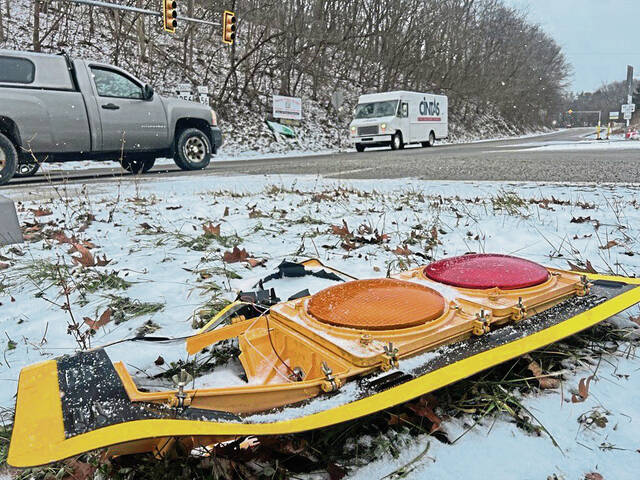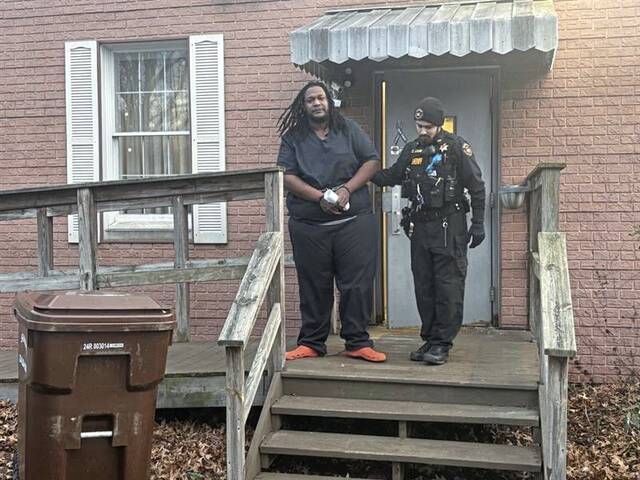Firefighters at West Deer Volunteer Fire Company No. 3 are planning a new fire station along Route 910 but without the township’s participation.
On Wednesday, township supervisors gave their unanimous approval to the fire company’s intent to borrow $1.8 million from a Mars bank but will not underwrite the debt.
The resolution the supervisors approved states the township will not be responsible for repayment of all or any part of the loan now or in the future, according to township manager Daniel Mator.
The disconnect is due to the firefighters’ desire to go it alone in purchasing and renovating the Krigger and Co. building at 4360 Route 910 (Gibsonia Road), Mator said.
The 21,700-square-foot building, situated on an 18 acres, is about a mile from the current No. 3 fire station.
Also, he said there is a difference of opinion centered on the costs of renovating the building into a fire station. The firefighters, whose plan was presented by fire Chief Josh Wiegand, project that cost at $450,000. However, Mator said Aimes Construction, the firm hired by the township to do a feasibility study on it, estimates it will cost $3 million to $3.5 million for the renovation alone.
The fire company has a sales agreement with the property owner to buy it for $1.8 million, he said.
A special public meeting of the supervisors, which lasted about 2½ hours, was held Tuesday to discuss the fire company’s plans and possible alternatives. At that meeting, the supervisors made their case for a complete municipal complex including the township administrative, police and No. 3 fire department all on the Krigger property. Mator said township officials believe more space is needed for the police and municipal offices than the current building on East Union Road provides.
“It would have been a municipal building with the police and municipal offices down there with a community area, a social hall,” Mator said of the proposal. “We would have built a separate fire company station to house the actual fire company trucks.”
The public works department could eventually be moved there, but that was not part of the initial plan, he said. Aimes estimated the cost to renovate the Krigger property for a municipal complex would be between $5.2 million and $6 million. The firm estimated the cost of renovating an existing building for administration and police at $2.6 million to $3 million and the construction of a new municipal building, without a fire station, at $5 million to $5.7 million.
“To clarify the board’s (supervisors’) position, they sincerely wanted to help Fire Company No. 3 and were concerned that the fire company would not be able to cover the cost of purchasing and renovating such a large building,” Mator said. “Because the township was simultaneously exploring a new municipal complex, the board felt that a collaborative approach would not only help the fire company overcome those hurdles, but would ultimately save tax dollars.”
For that project, the township would have been fully involved in the financing and construction, he said. However, he said, the fire company was “adamant” in its position.
“They did not want the township to be part of it and wanted to renovate the property on their own dime,” he said.
Wiegand said renovating the department’s current property was not feasible.
“West Deer Number 3 has been at its current location for 60 years,” Wiegand said. “We’ve added on six times in that 60 years. We need more room again, but there’s not a good, feasible option to expand the current facility. We have a hillside on one side of us and a business on the other, so we can’t really expand here.”
Wiegand said the fire company was aware prior to the meeting that the township would not underwrite their loan. He said they did, however, give the bank approval to offer them a municipal rate loan. That was all the fire department needed from local officials, he said.
“I’m pleased that we can move forward,” he said, adding that the fire department is accepting donations from the public to help with the costs.
Wiegand said the new building is “nearly perfect,” and the fire department was pleased with its location. The building is equipped with many of the amenities they need, including offices and a training room. Upcoming renovations will come in phases, Wiegand said, and include installing additional garage doors and renovating a social hall for fundraising and community events and to serve as a polling place.
“It’s necessary for the fire department to grow along with the community so that public safety is adequate,” Wiegand said. “That’s the whole purpose of this investment.”
Financial sources the firefighters plan to use to pay for the project, according to their presentation, include $700,000 from the sale of their existing building, a 20-year state loan for $450,000 at 2% interest and $250,000 from the company’s capital improvement and truck funds and investments and a $500,000 grant from Allegheny County gaming funds.
The financing from Mars National Bank would include a $1.4 million mortgage for 15 years at 3% interest and a $400,000 bridge loan on the existing property.
There is no argument from the township that the fire company is in serious need of a new building to house its equipment which includes six fire trucks.
“They’ve definitely outgrown the building,” Mator said. “They’ve maximized as much space as they could. They do need to expand. They get an A-plus for maximizing space.”
From a history published on its website, Krigger and Co. was founded by A.H. “Guss” Krigger in 1928 as The Golf Course Supply Company located on Pittsburgh’s’s South Side. It sells and services equipment used to maintain lawns and golf courses. The company constructed its building along Route 910 in 1997.
Mator said the owners are selling the building because they are retiring.
“It’s in great shape,” he said, but Aimes had several concerns in regard to using it as a fire station.
“One of the things that had Aimes concerned is they don’t know how deep the concrete (floor) is and there is no way of knowing unless you do a core boring or if you have the plans for the building’s initial design,” Mator said.
Another issue the Aimes study raises is adequate space to accommodate the fire trucks in the building’s current bays which are narrower than the 28 feet needed for fire apparatus.
Despite their divergence of opinion, Mator said the supervisors gave their approval to the fire company’s loan application because it will enable them to secure financing at a lower interest rate.
“If they have a written agreement in place, the township can’t stop them,” Mator explained. “We just wanted to warn them that the costs could be more extensive than they thought they would be.
“They (supervisors) support the fire department, they just do not see how this is going to work for them.”








